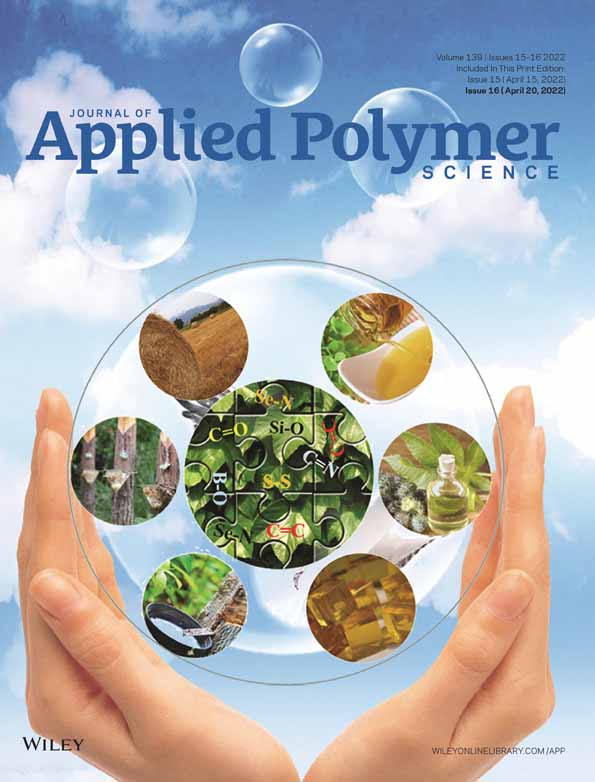Process and performance of palmitic acid @silica phase-change microcapsules using chemical precipitation method
Funding information: National innovation and entrepreneurship program for college students, Grant/Award Number: 2021GJ-011; Shanxi science and technology department, Grant/Award Number: 2020L637
Abstract
Using sodium metasilicate as the silicon source and coating palmitic acid (PA), a PA@SiO2 phase-change microcapsule material (PCMM) was fabricated using a chemical precipitation method. The effects of varying the core–shell mass ratio, the concentration of hydrochloric acid, and the dropping rate of the silicon source on the microstructure and phase transformation behavior of microcapsules were studied. The composition, structure, and thermal properties of the microcapsules were investigated using Fourier transform infrared spectroscopy, x-ray diffraction, differential scanning calorimetry, and thermogravimetric analysis. Results show that PA and SiO2 combined physically and not chemically to produce new substances. When the core-shell mass ratio of the material was 1:1, the concentration of hydrochloric acid was 0.8 mol/L, and the dropping rate of sodium silicate was controlled at 0.5 ml/min, the PA@SiO2 PCMM prepared under these conditions exhibited good dispersibility. The particle size was approximately 200 nm and showed good uniformity, and the encapsulation ratio (R) and energy storage efficiency (E) both exceeded 80%, indicating that PA was encapsulated by silica to form a phase-change microcapsule. Furthermore, the thermal stability and cycle durability improved.




